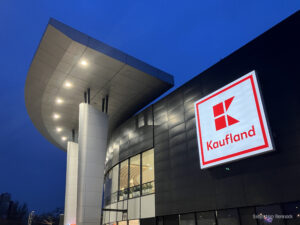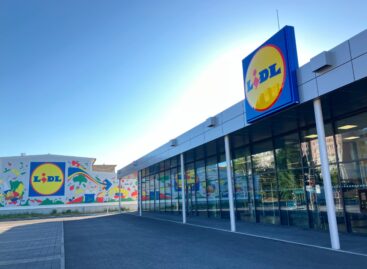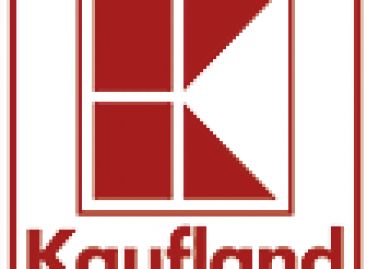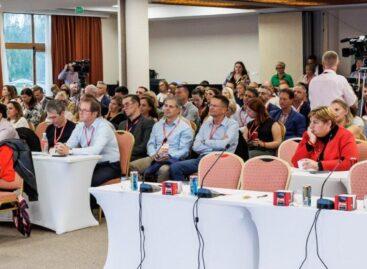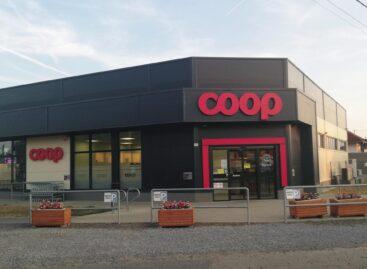Kaufland Poland in Need of Transformation
Kaufland Poland has become the problem child of Kaufland’s international business. The Wroclaw-based subsidiary of the German superstore operator plunged into the red in the past fiscal year, posting a negative pre-tax profit margin of -1.7% after a positive result of 2.2% in the previous fiscal year.
Setback impacts international results

Sebastian Rennack
international retail analyst
Aletos Retail
The results of Kaufland Poland put pressure on the entire international organization. The remaining Kaufland operations in Central and Southeast Europe, with the exception of Kaufland in the Czech Republic, for which financial figures have not yet been published, grew by 13.8% on a euro basis in the comparable period, according to the author’s calculations based on balance sheet data.
Here, too, the pre-tax profit margin came under pressure, falling from an average of 5.0% in the previous year to 4.5%. However, the double-digit increase in sales allowed for a slight improvement in the combined result of Slovakia, Romania, Bulgaria, Croatia and Moldova in absolute terms, with pre-tax profits rising from 335 to 342 million euros. If the positive pre-tax result of Kaufland Polska of 68 million euros in 2022/2023 is taken as a reference, the loss of the national division of 52 million euros a year later means a theoretical setback of 120 million euros.
Langging behind sales channel peers
What should have Kaufland managers worrying is the fact that, for the first time since the general “CEE facelift” more than five years ago, net revenue also showed a negative development and decreased by four percent in local currency. In contrast, French hypermarket channel competitor Auchan Poland was able to increase its net sales by 2.9 percent in the comparable period. Carrefour reported a decline in sales, albeit less pronounced than Kaufland at minus 1.6%. Although not as profitable as in the past, both achieved positive pre-tax profit margins. Supermarket operator Intermarche did not disclose profit figures, but announced a staggering like-for-like growth of 11.5% in 2023.
Kaufland grapples with price and cost pressures
Kaufland is feeling cost pressure on several fronts. Balance sheet data shows that from 2017 to 2021 inclusive, the Schwarz Group banner’s gross profit margin in Poland rose steadily from 23.4% to 26.5%. The following two years of sustained inflation and cost pressure let the indicator fall back to 26.1%.
The special retail tax of 1.4% on revenues for large retailers, introduced at the beginning of 2021, doubled the taxes paid from 2021 on going forward to around 2.0% from revenue each year, increasing financial pressure further.
At the same time the impact of the 15.9% increase in national minimum wage from the beginning of 2023 can also be seen in the figures. In 2023 salaries and wages payments have risen from 6.3% to 7.3% of net revenue, after steadily falling from 6.9% in 2020 to 6.3% in 2022.
Simultaneously, rising interest rates have caused a surge in net interest payments, with the financial result of Kaufland Polska worsening from minus 0.3% of net revenue in 2021 to minus 1.4% two years later.
Loyalty program change could prompt customer defections
The slump in results may also have been influenced by Kaufland’s switch from the Payback partner program to its own Kaufland Card in March 2023. Kaufland Poland was the last country in the international Kaufland universe to launch its own bonus program. In hindsight, the decision came much too late. Lidl had launched its Lidl Plus program two years earlier and, like Biedronka, was already offering exclusive discounts for loyalty members. Kaufland still is in the phase of building market penetration with its new loyalty program.
The vulnerability of the ‘large-area discount’ model
But not all factors are external. Kaufland, which until recently was internally regarded as a large-area discounter, has not adapted sufficiently to the changes in the Polish market environment. Playing exclusively on price is a costly strategy in an FMCG market with a discounter share of more than 40% and intense price wars at the top.
The old-school approach of economies of scale has worked moderately well in Germany, where Kaufland has been able to grow over the past two years, mainly thanks to the acquisition of 100 Real hypermarkets, and is now by far the country’s largest hypermarket operator with more than 770 stores and estimated net sales of 20 billion euros. But here too, market sources indicate that the positive effect of the Real integration of the past two years is fading quickly.
Similarly, Kaufland’s expansion in Poland has benefited from Tesco’s exit for several years. But that doesn’t change the fact that the hypermarket operator is only number 6 in the national ranking, in the same ball park as Auchan and Carrefour, but far away from Biedronka and Lidl.
Lidl transforms into a mini-Kaufland
All the while the gap between Lidl and Kaufland is narrowing. The hypermarket’s internationally streamlined assortment of 15,000 to 20,000 SKUs, which is one key element to enable efficient store operations, is now becoming Kaufland’s Achilles’ heel. And it can be safely assumed that Schwarz’s sister company Lidl is eating away at Kaufland’s customer base. With each passing year, Lidl continues to refine its supermarket approach, reinforcing its image as a full-range, one-stop shopping destination. With an estimated 2,500 SKUs in the standard assortment, another 2,500 SKUs in promotional products throughout the year, and currently more than 10,000 SKUs in the non-food online shop, Lidl from a customer perspective has already become a large supermarket. It is indicative for Lidl’s leading role when considering that Lidl’s Parkside non-food assortment concept was adapted in-store by Kaufland, not the other way round.
Biedronka and small-area supermarkets erode Kaufland’s business model
In addition, one specific of the Polish retail market is the presence and quick expansion of small-area supermarkets such as Dino, Stokrotka and Delikatesy Centrum featuring serviced counters for fresh produce. Their rapid expansion increasingly poses a threat to Kaufland’s business model, since effectively cancelling the advantage of Kaufland’s fresh service counters that cannot benefit from own production capabilities. At the latest in 2019, when price and market leader Biedronka announced plans to roll out serviced counters to almost 100 of its discount stores, the alarm bells should have rung loud and clear at Kaufland.
Kaufland’s fresh ranges have lost their ability to differentiate
Carrefour recognized this trend several years ago when the French hypermarket operator launched its Carrefour PRO pilot store in Warsaw with a strong focus on fresh produce and convenience. At that time half of the new store was dedicated to fresh and healthy products, many of which were produced in-house or sourced locally. Carrefour was also the pioneer among large-area operators for in-store foodservice and food-to-go. Also, the Auchan flagship store in Piaseczno, after its renovation at the end of 2022, serves as an advocate for a more localized approach and a more culinary, convenience-oriented experience.
Kaufland is lacking evolution in the fresh ranges. The most important steps from a customer view were the introduction of smoking ovens in selected stores, a hot shelf for grilled chicken and a separate refrigerator for cakes in the bakery section. Not exactly overwhelming innovations considering a period of five years.
Local adaptation: Shift in management mindset is crucial
Going forward, however, Kaufland will have to tackle a much bigger challenge: changing the top-down management mindset that has been ingrained for decades. The chain of command is rigid in a model based on efficiency and economies of scale. Store managers and regional sales directors implement Kaufland’s AMS system (Arbeit Mit System aka Working Systematically). The collection of red folders in every store manager’s office, containing all relevant store processes and checklists, helps to create clarity and simplicity in store operations and also stabilizes the business in times of high personnel turnover. But the exclusively KPI-driven management style also carries the risk of losing sight of the local customer. Kaufland store managers pay far less attention to their local catchment area than their colleagues at Carrefour, Auchan or Intermarché. For a discounter like Lidl, this is an understandable approach. For Kaufland, it is not anymore.
Related news
Price reduction at Lidl: Popular butters are available for less
🎧 Hallgasd a cikket: Lejátszás Szünet Folytatás Leállítás Nyelv: Auto…
Read more >Kaufland tests telemedicine service in Germany
🎧 Hallgasd a cikket: Lejátszás Szünet Folytatás Leállítás Nyelv: Auto…
Read more >We took you on a flight! (Part 2)
🎧 Hallgasd a cikket: Lejátszás Szünet Folytatás Leállítás Nyelv: Auto…
Read more >Related news
Superbrands celebrated again in 2025
🎧 Hallgasd a cikket: Lejátszás Szünet Folytatás Leállítás Nyelv: Auto…
Read more >László Pekó: “Coop isn’t just a network, it is a way of life – and has been for 30 years”
🎧 Hallgasd a cikket: Lejátszás Szünet Folytatás Leállítás Nyelv: Auto…
Read more >(HU) Karácsonyi tv-reklámok 2025 – indul a közönségdíj szavazás
🎧 Hallgasd a cikket: Lejátszás Szünet Folytatás Leállítás Nyelv: Auto…
Read more >
